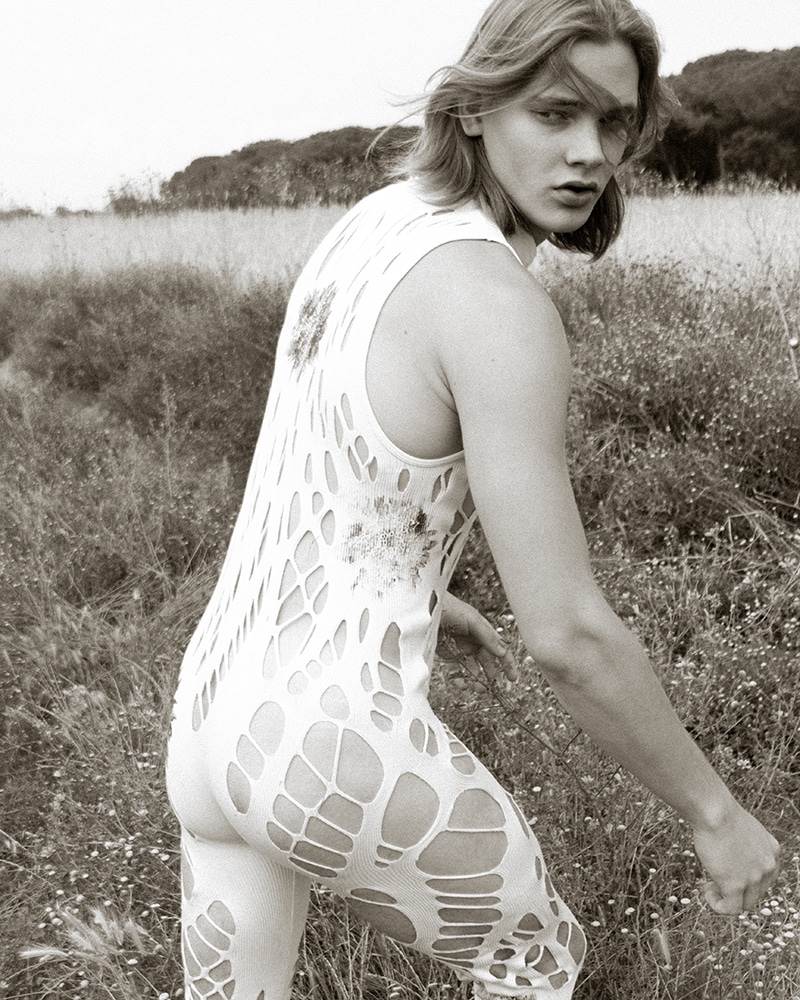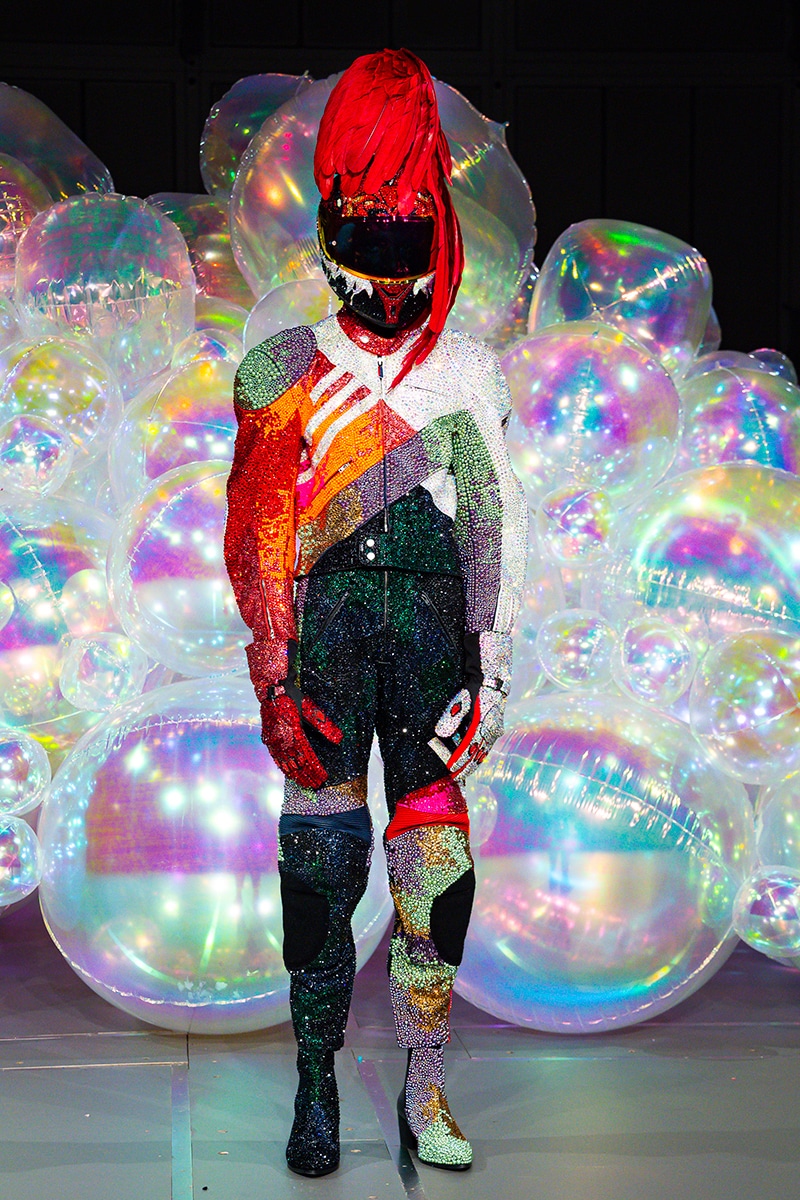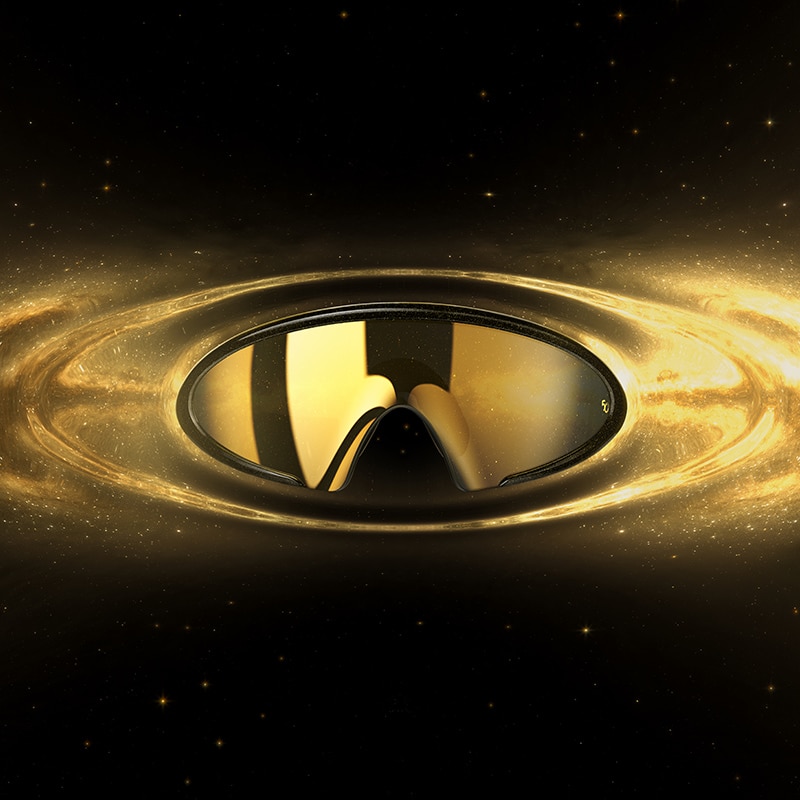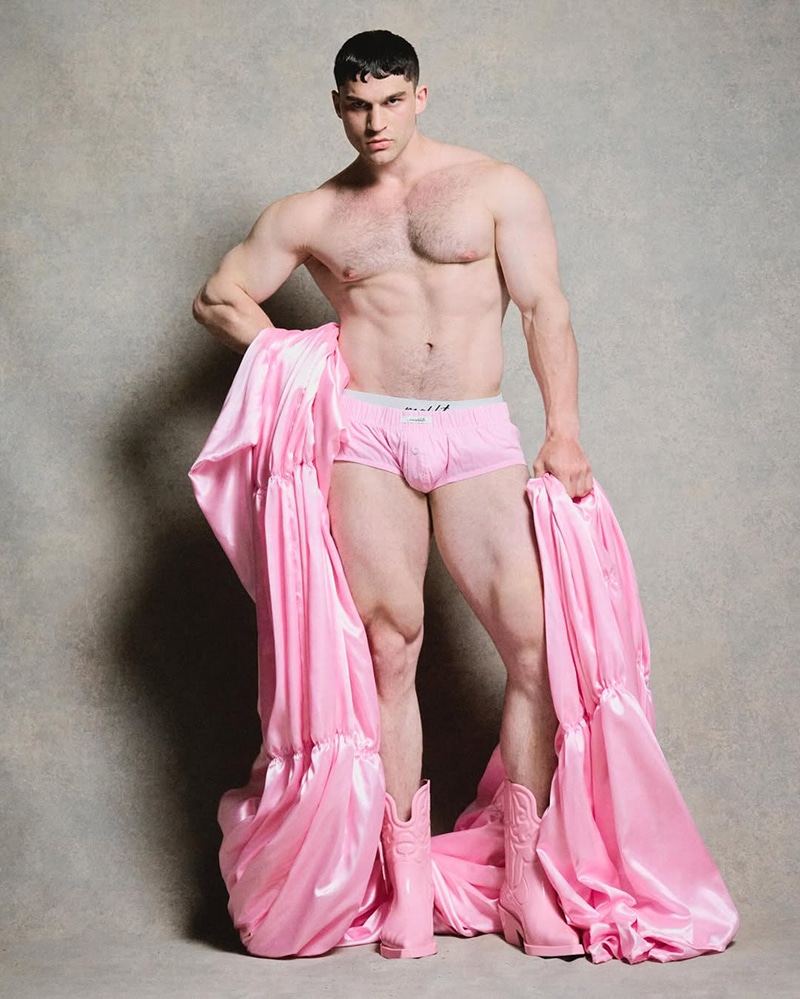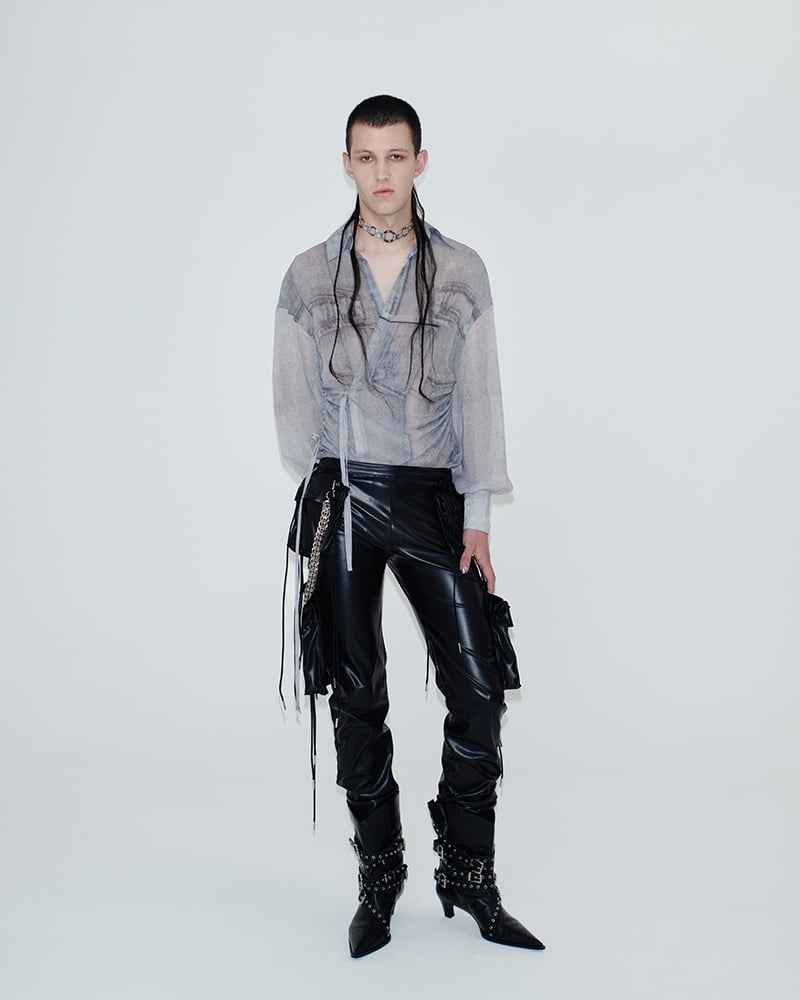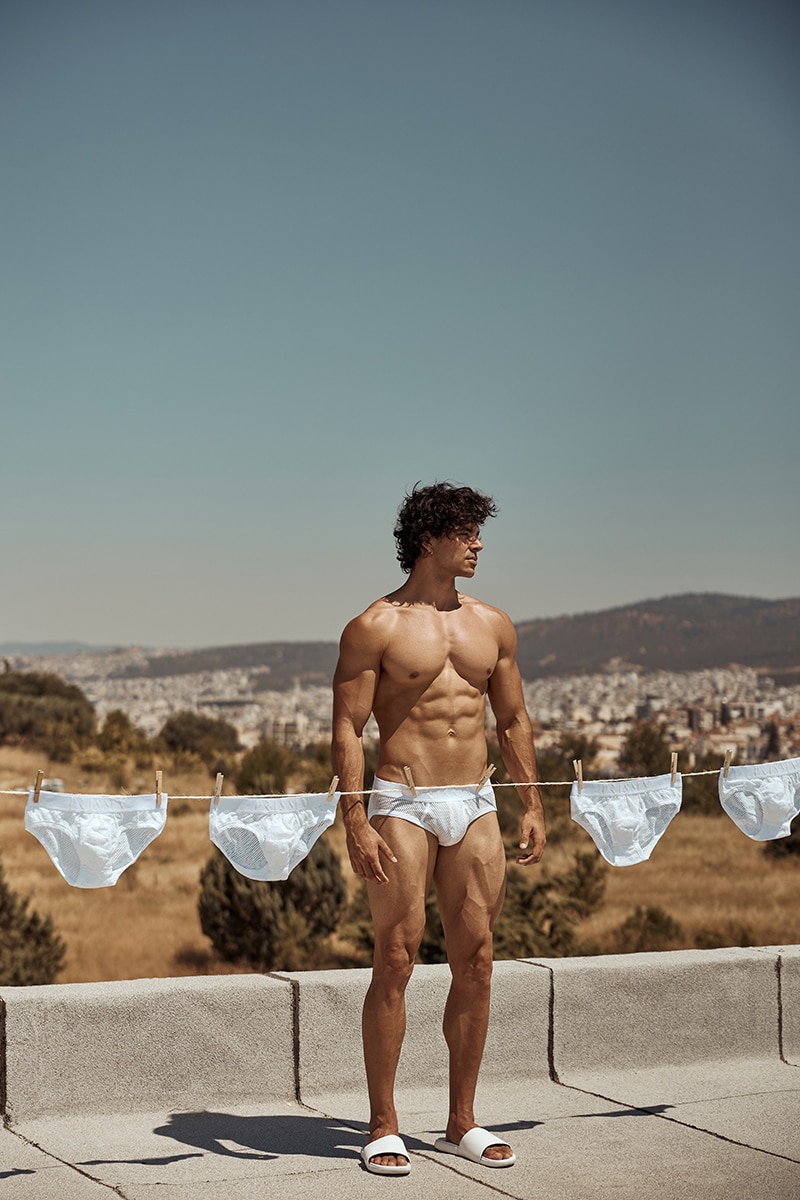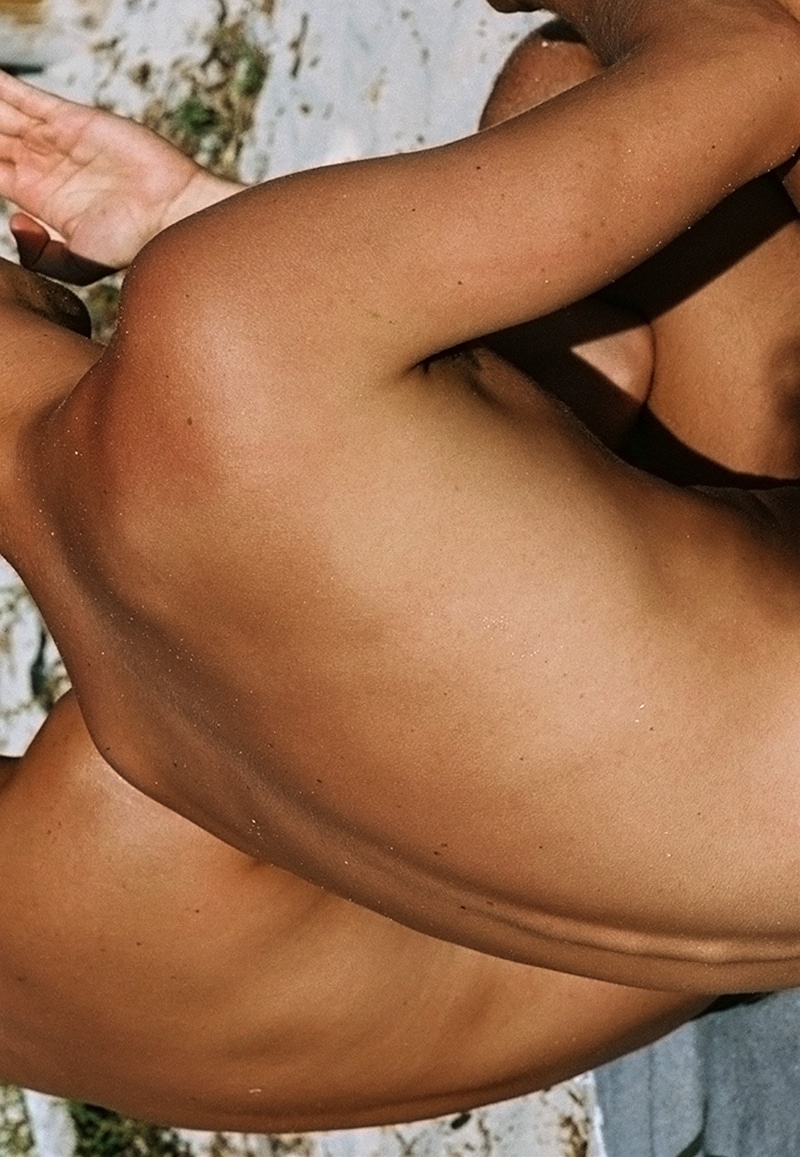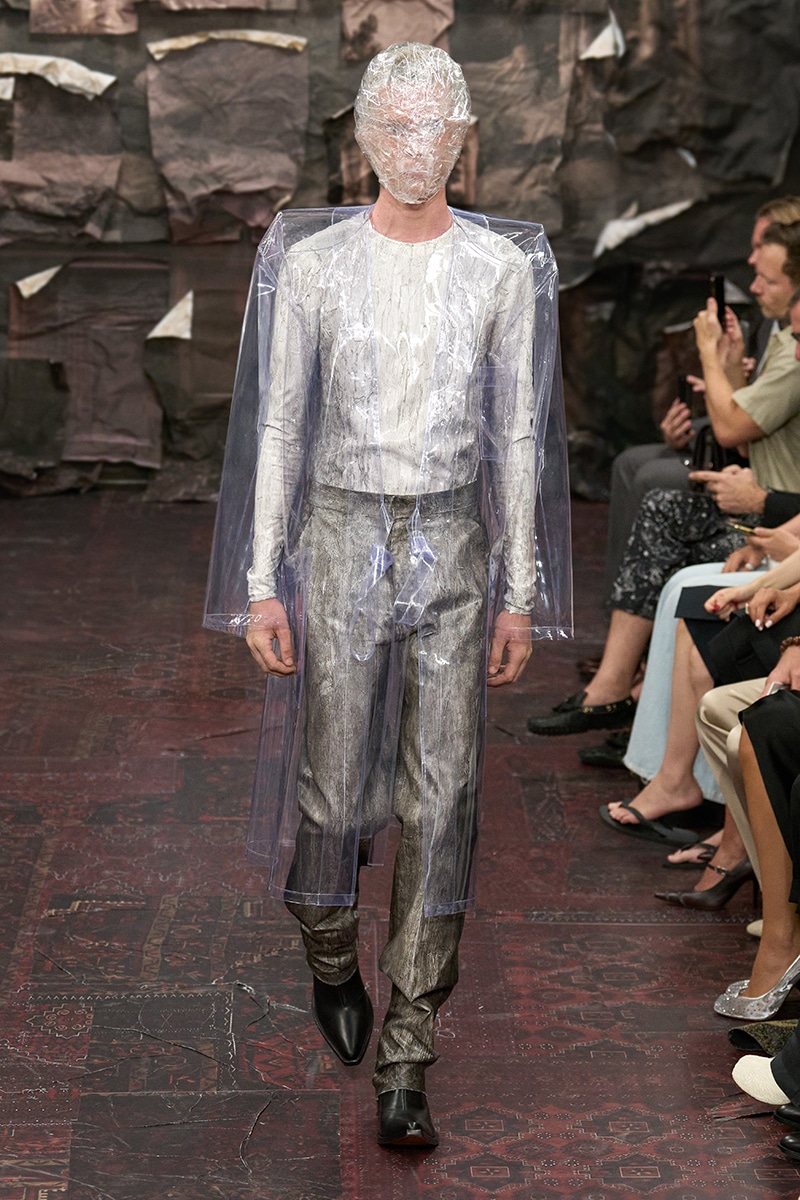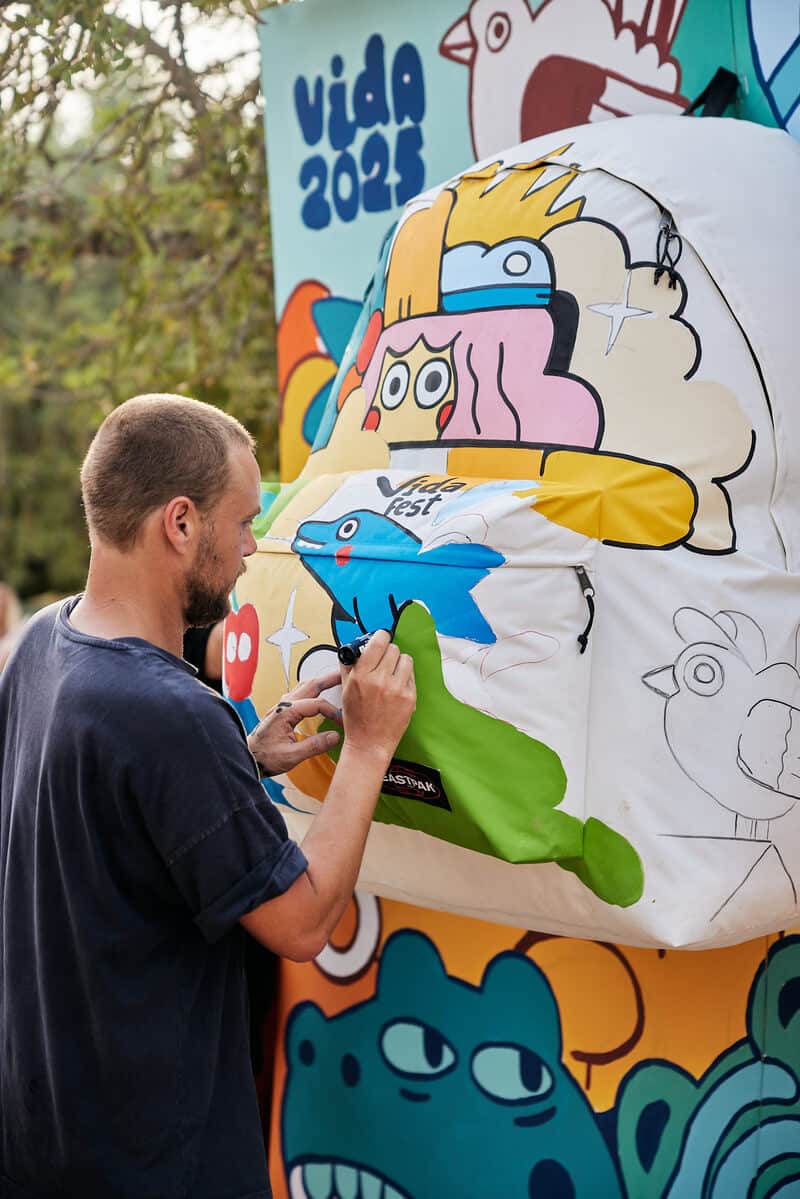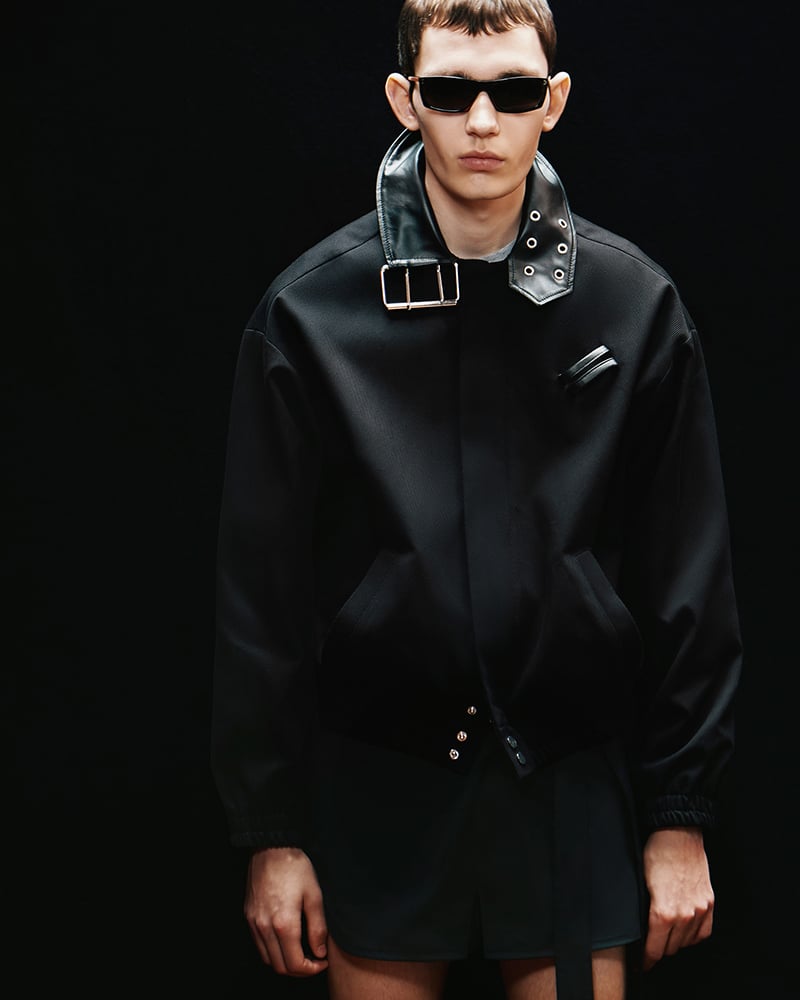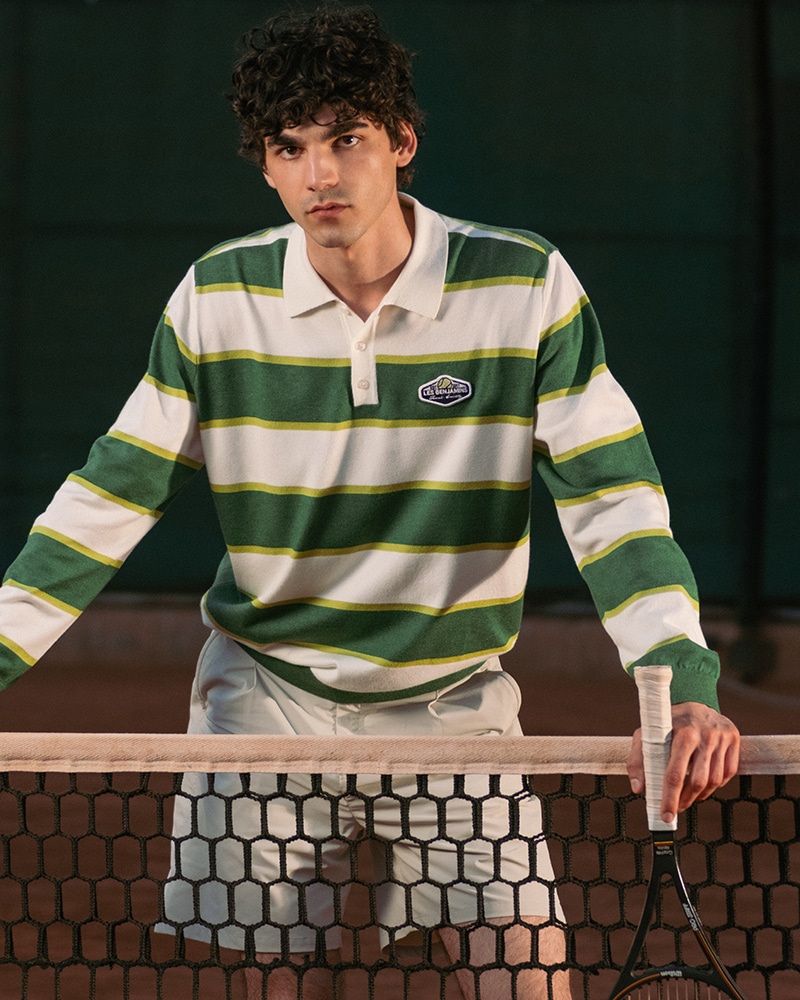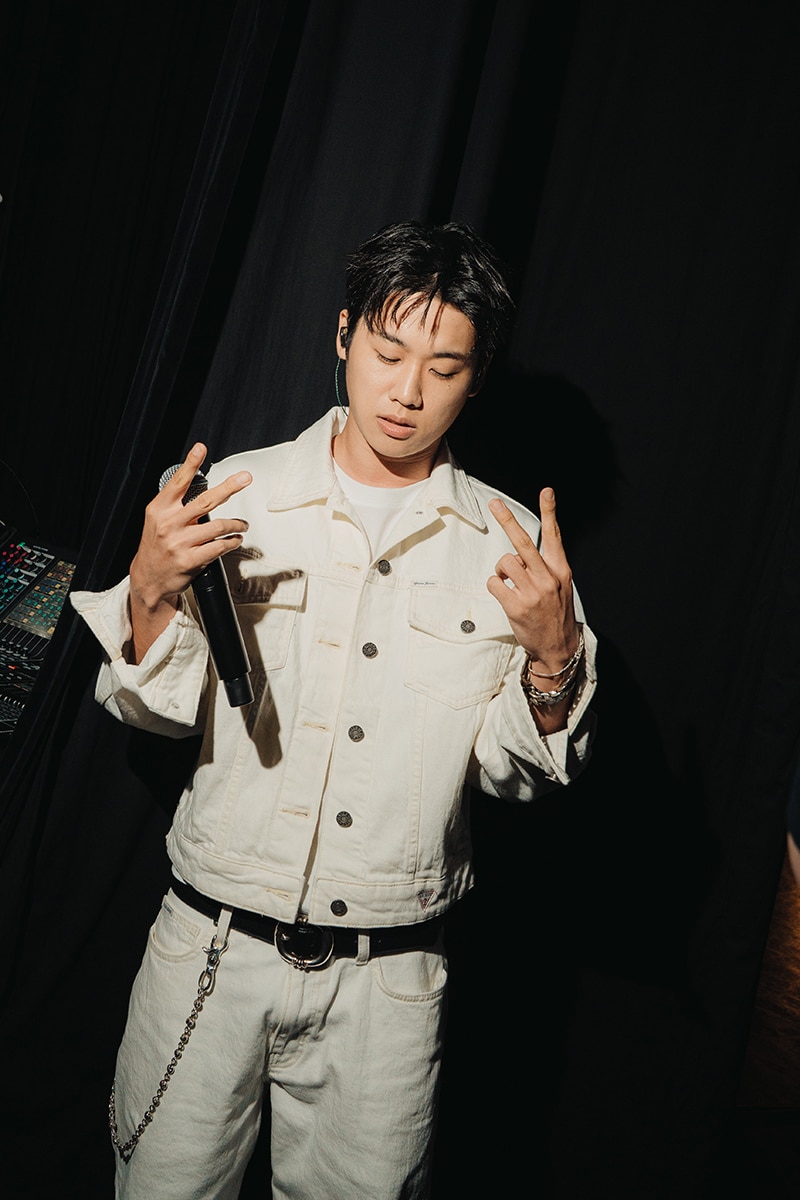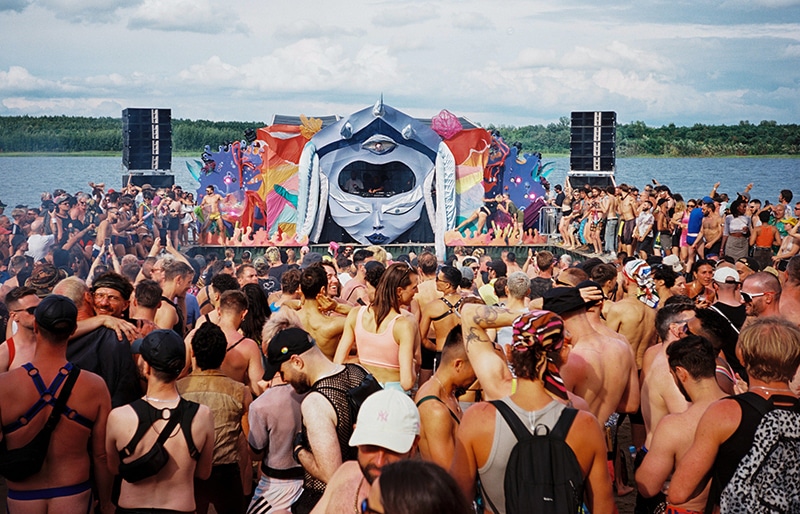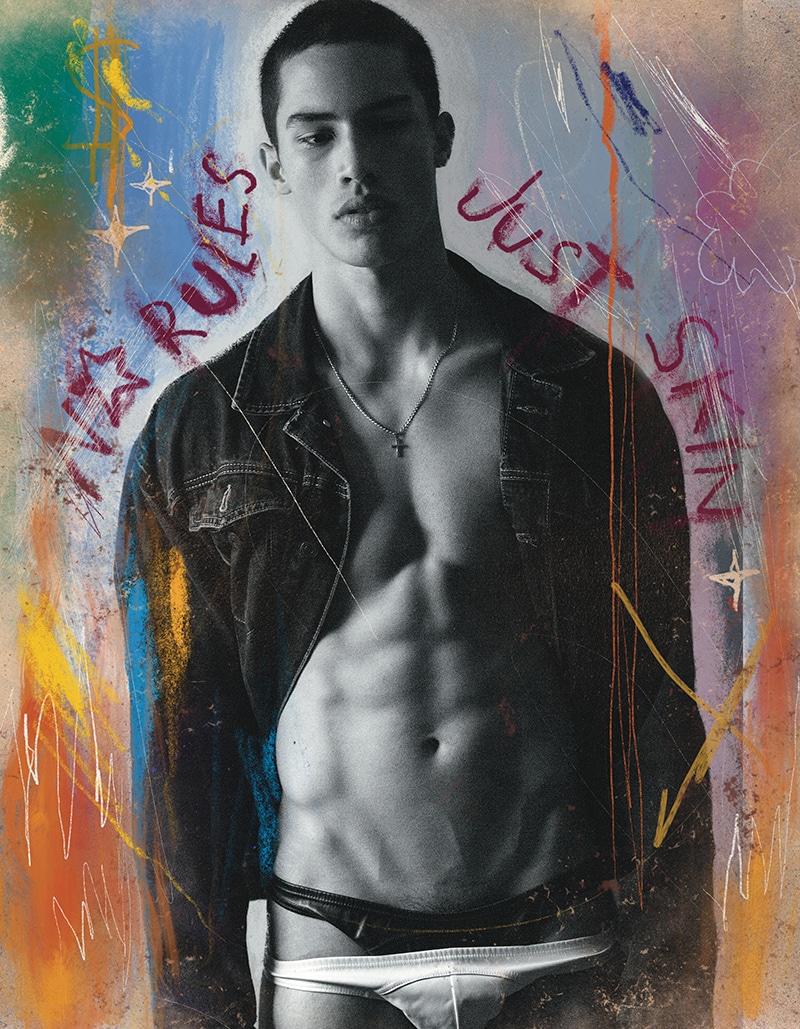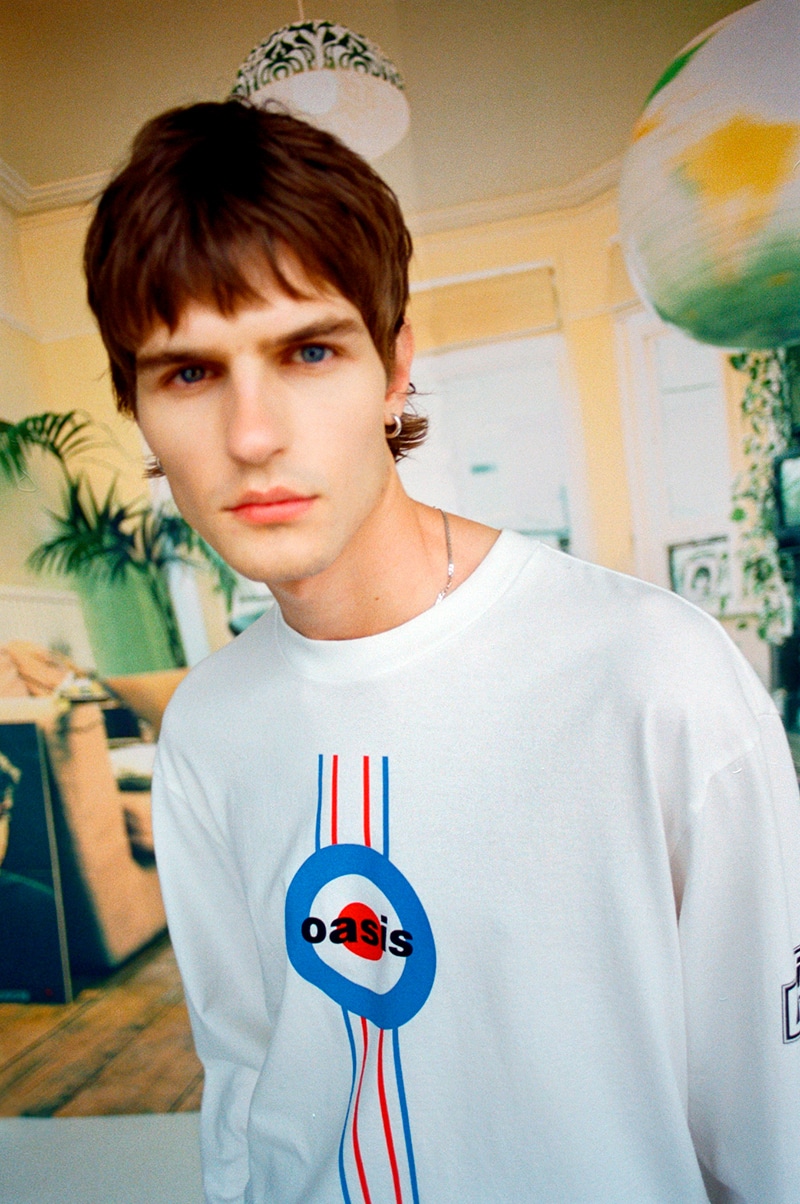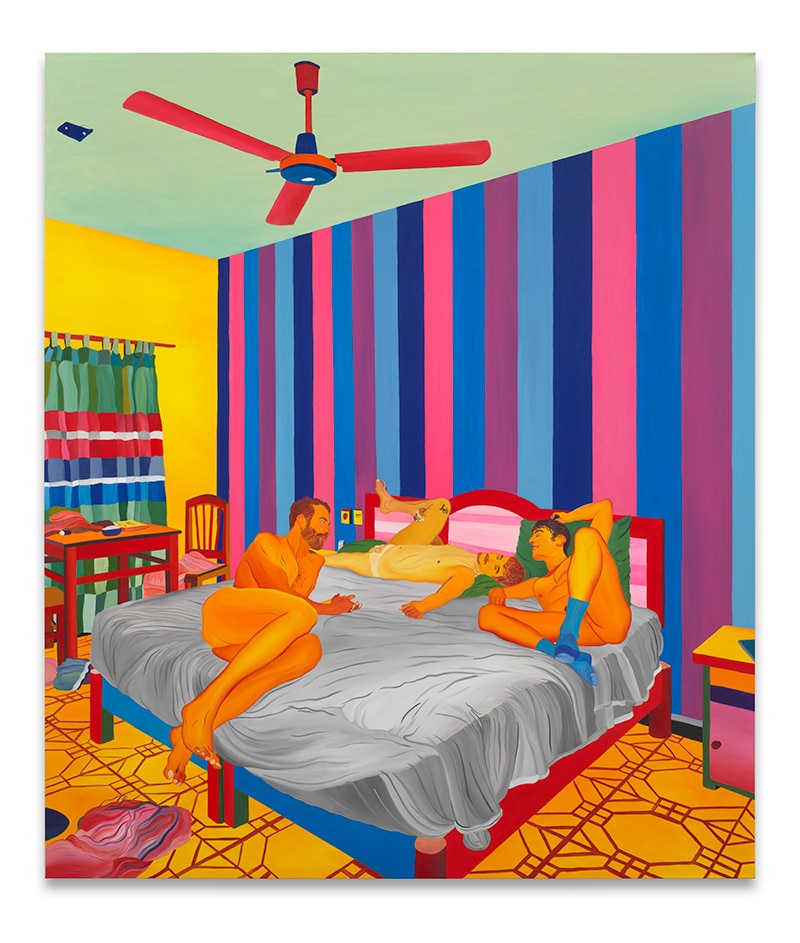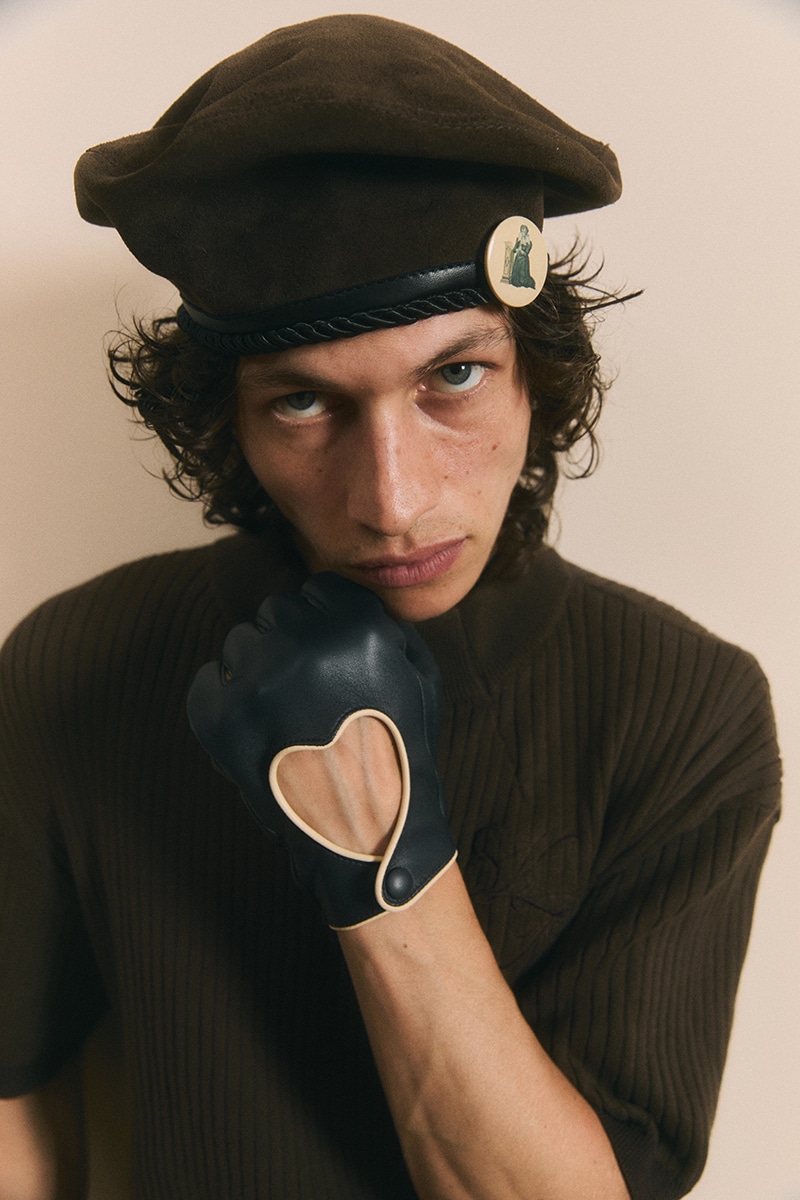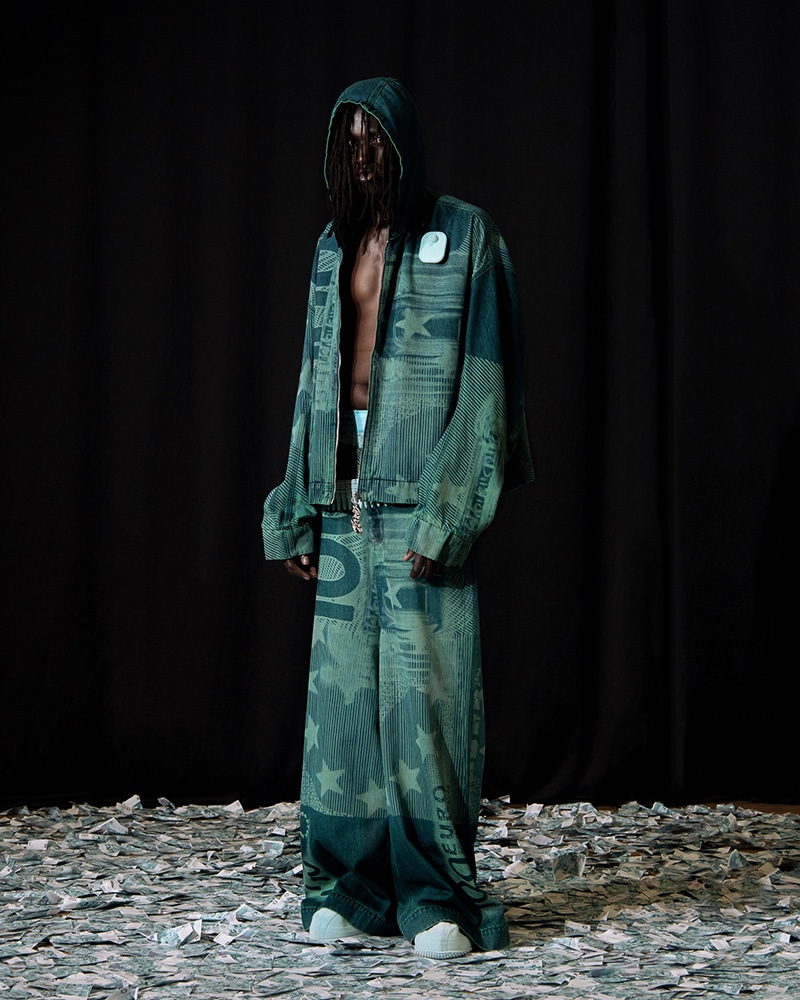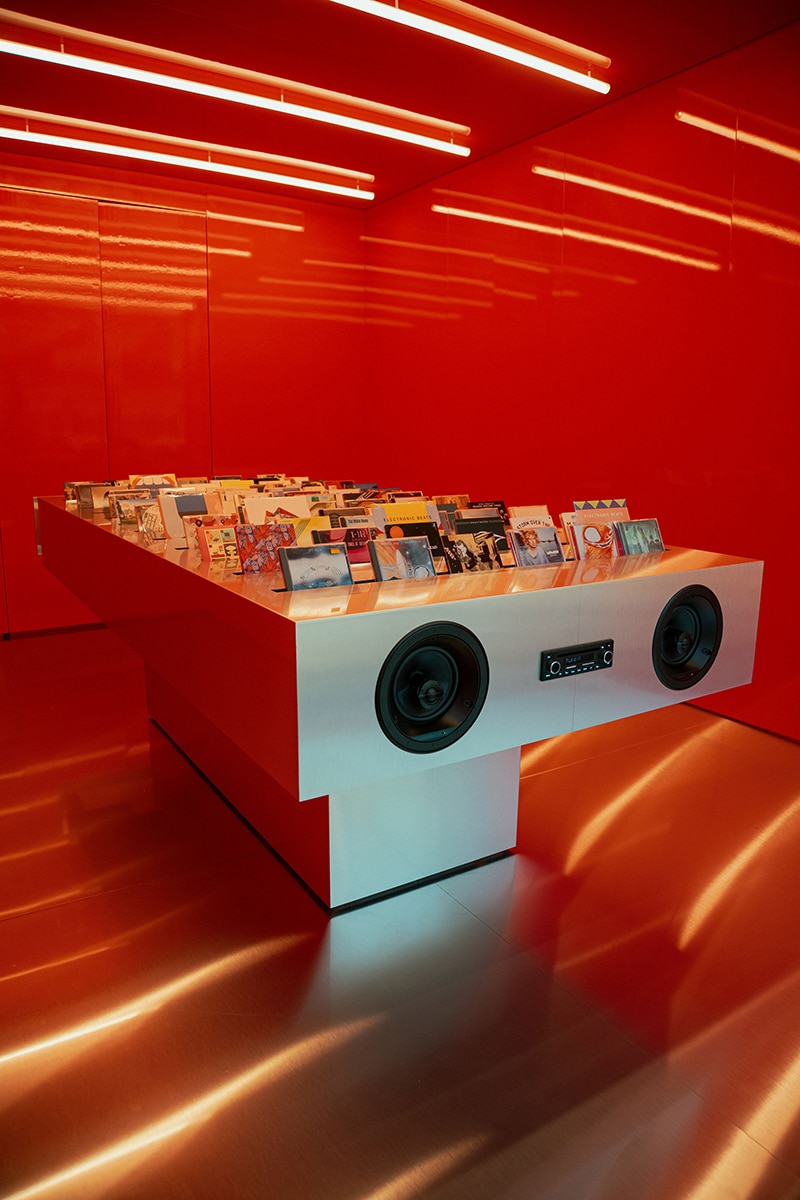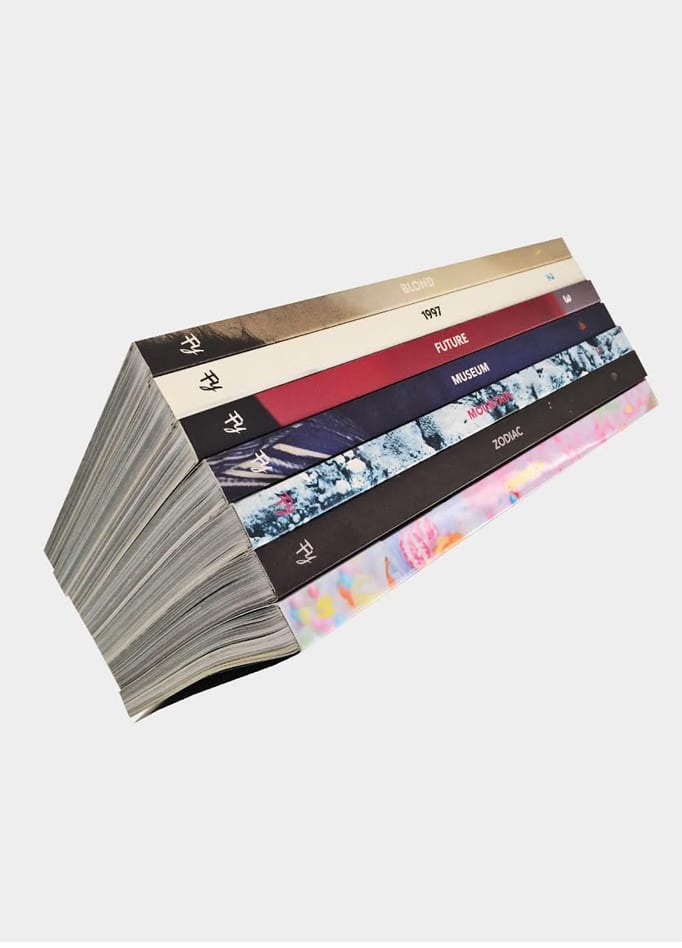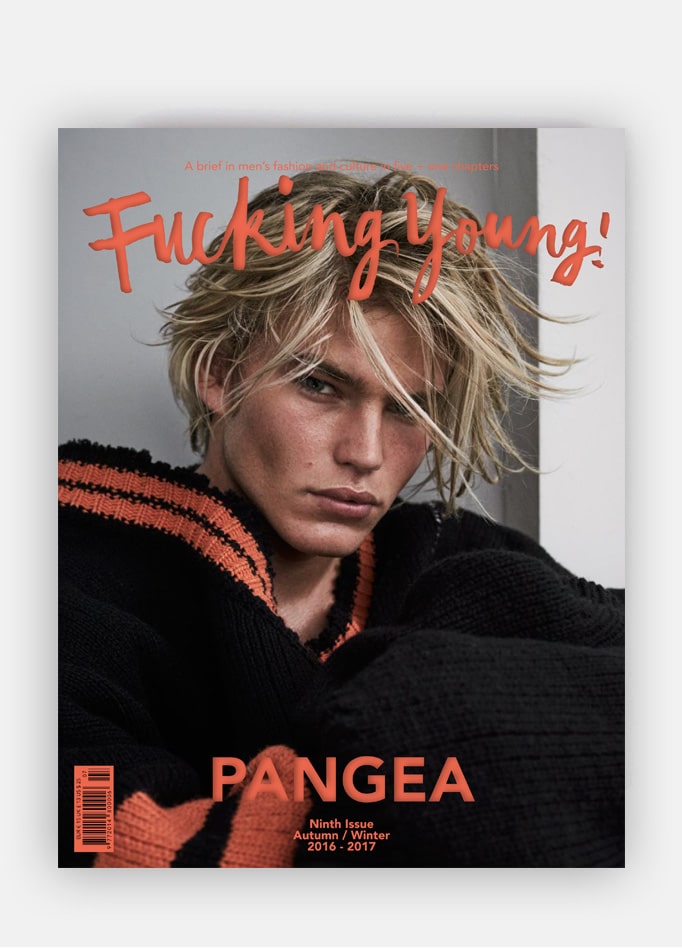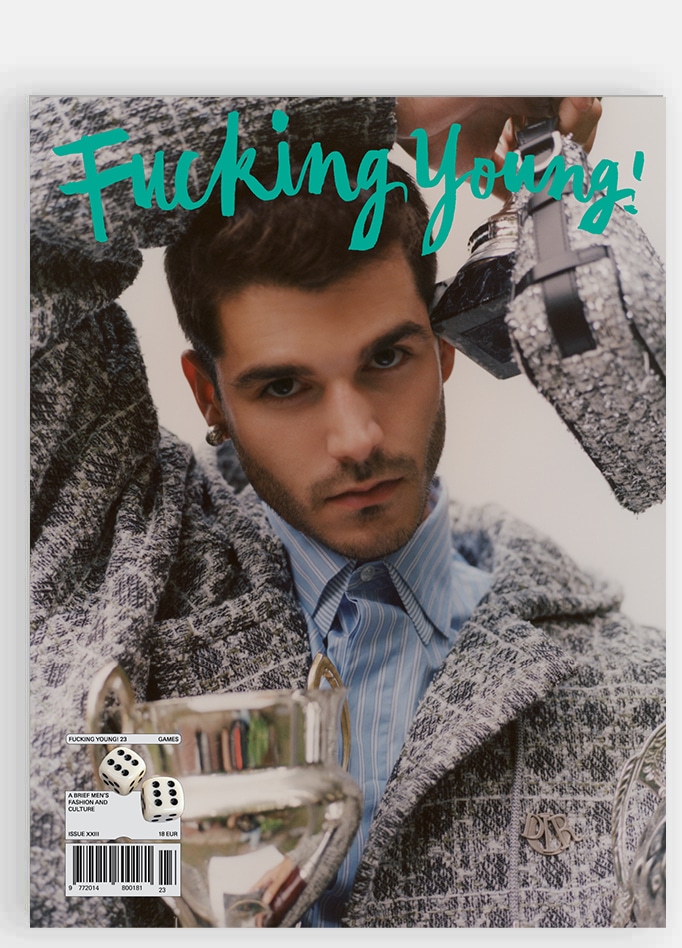“Ilovemakonnen.
I have been down for so long. And I have been keeping it too real.
So I’m gonna say what I want. And I don’t care how you feel…..No I don’t care how you feel….“

ANDY RESTUCCIA
Sometimes you gotta hunt a little, for amazing warriors keeping far away from the fashion pack and its sordid fringes. I remember when I first met Andy. A soft-spoken slightly shy individual with a truly unique spirit. Andy’s thing is hair, has been all his life, will be until he eventually packs it in.
Hair is amazing, as the song goes, it even grows after you die. Hair is freedom, it is life, it is unique, it is sexy, or most definitely not. Andy cuts it his way, like no-one else. So we spoke to him over the phone, from his native Melbourne, down-under. And whaddayaknow: the man has lived quite a life. So listen up, stroke your follicles and brave that next cut…
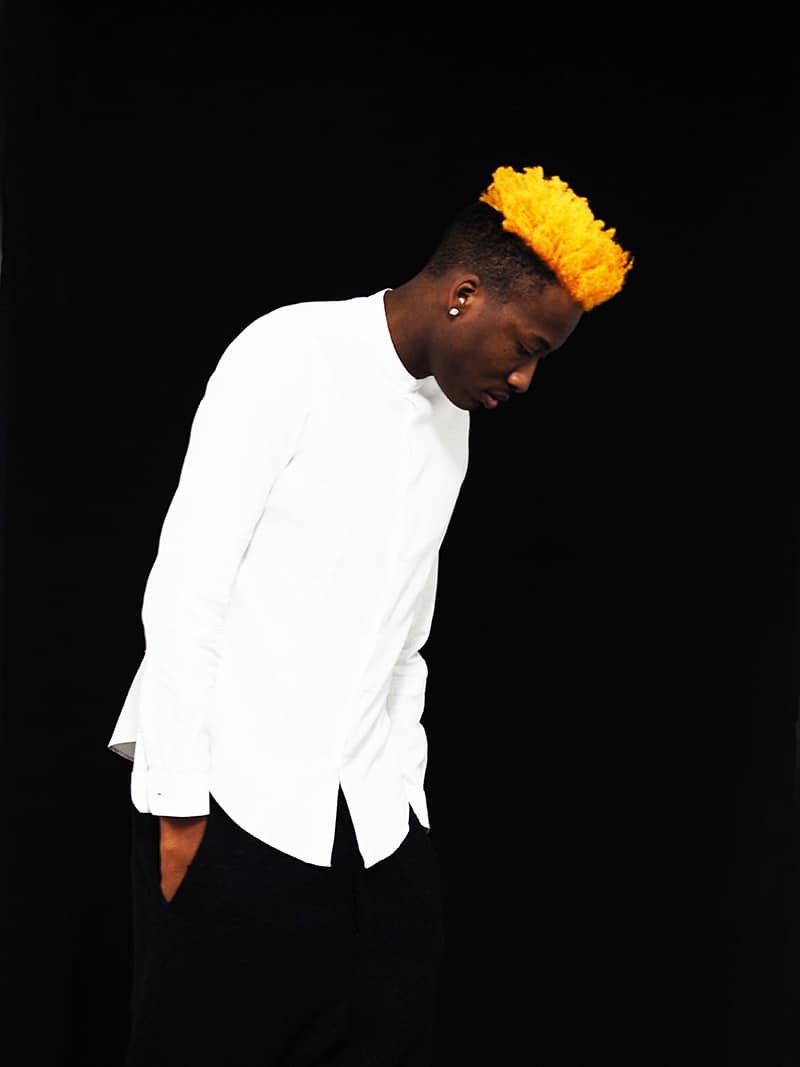
FOUNTAIN. Andy, what memories do you treasure most as a youngling?
I was surrounded by a lot of creativity and music growing up. I have rich memories from lively bars and pubs where I used to watch my father play bass guitar. Inspired by the likes of Buddy Rich, when I was nine I started playing drums myself. I loved the sensation of the sticks hitting the skin of the drum and the vibration that pulsates through your body as you become one. A lot of my younger days were spent as a drummer in a Melbourne based band. We went on to produce an album, tour the state and establish a small fan base of screaming teenagers – you can imagine, this was a crazy experience for a 15 yr old.
GIFT OF GAB. At FY! we like to think about moments that make us come of age, youth is eternal, but that first moment of mature recognition is so important. What defined your call to arms?
I’m not sure there was an exact moment that led me to where I am now, perhaps more of a natural progression. My grandfather and father were both hair artists and worked together in their hometown of Sicily. When they migrated to Melbourne they ran two salons and thus I was born into the craft. My mother was a seamstress and also worked at the library. She is a very stylish woman with excellent knowledge about art, fashion, literature, and culture. I spent a lot of time with her together pouring over fashion and art books, devouring the elegance and beauty on the pages. Whilst becoming a “hairdresser” was a predictable calling, I think the light bulb moment for me was more associated with when I realized I didn’t belong in the hairdressing industry. I always felt uncomfortable with the outdated practices of salons. When I opened my own space this was when I saw an opportunity to create an environment where hair was material to be respected, where hair trends didn’t exist and the vanity of the beauty industry could be left at the door. It was refreshing and a defining moment.
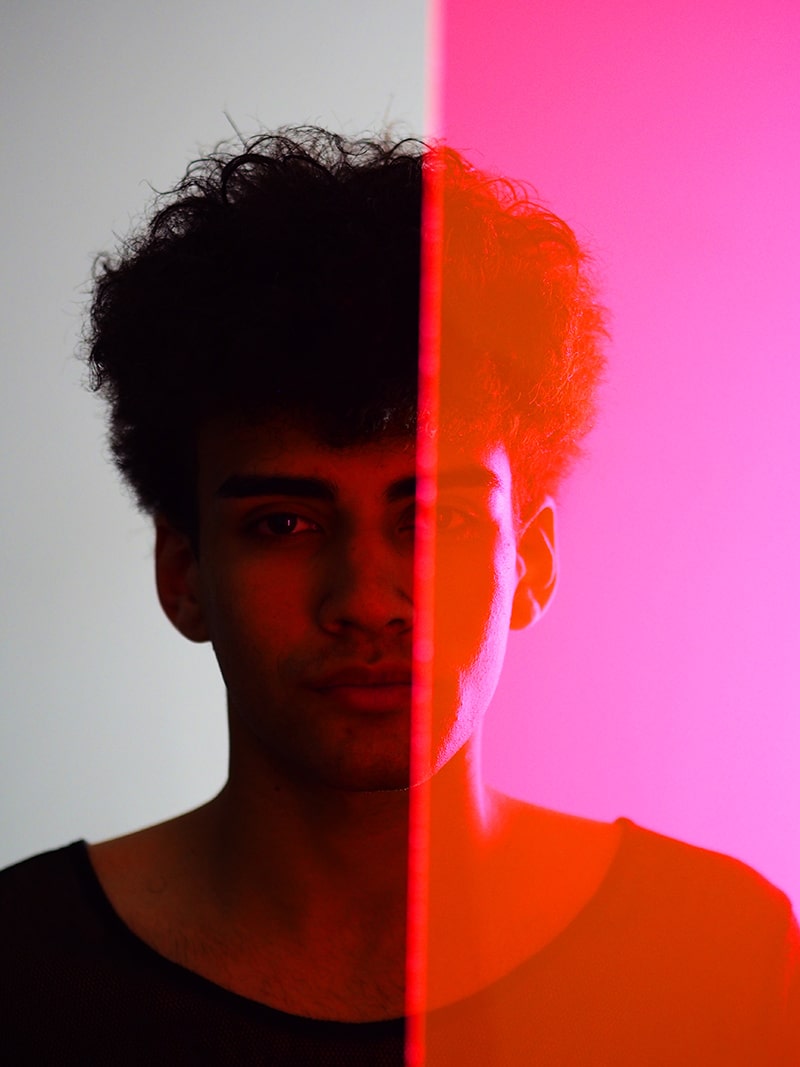
EDWARD S. You have been on quite a journey as a hair artist. Do you remember the first ever hair-cut you gave? What was this sensation like?
My first hair cut was on my father. It was in his salon and he was instructing me how to cut his hair using a hand mirror. There was much seriousness in it, almost a right of passage.
I can’t count how many hairs I’ve cut or heads I’ve met since that day, but the delicate sound that the scissor makes when it slices through hair has always remained music to my ears.
ZEALOT. Hair is often given a bad rep, it can be even overlooked on the menswear roster, which is a pity. So what does it mean to you?
I see hair as a seamless extension to clothing. I appreciate fashion that is minimalist, well crafted and poetic. The hair that I create is a reflection of this aesthetic, effortless in appearance. I believe that hair should compliment a look, rather than overtake it.
I find it intriguing when you see on the runway hair that is over-styled into crazy shapes and so theatrical. It’s almost as if the hair is compensating for the clothing not being interesting enough. It’s not really how I see hair.

AT THE DECKS. Well, thank god you do things most differently. Could you give us an insight into why your process differs so much from others?
I aim to create hair that can be easily managed by the wearer through methods that are gentle and supportive of hair health. I have spent my career exploring new techniques and pushing the boundaries of my craft.
I prefer to work with hair when it is dry, this allows me to see its natural form and movement. I cut intricate patterns into the hair (rather than just cutting the ends of the hair) to develop structure and to allow the hair to come alive with movement. My method can take 1-2 hours and I prefer not to use styling products or tools that are damaging to the hair – generally just my hands, a comb, and scissors.
I also use performance art and other art mediums to experiment and find new ways of working. I once cut hair for three models simultaneously, to the sounds of minimalist compositions played by a cellist, inspired by John Cage with the view of exploring chance techniques and how they interrupt the cutting process. Another work involved me cutting hair for 24 hours continuously to understand how physically and mentally intensive environments impact my creativity.
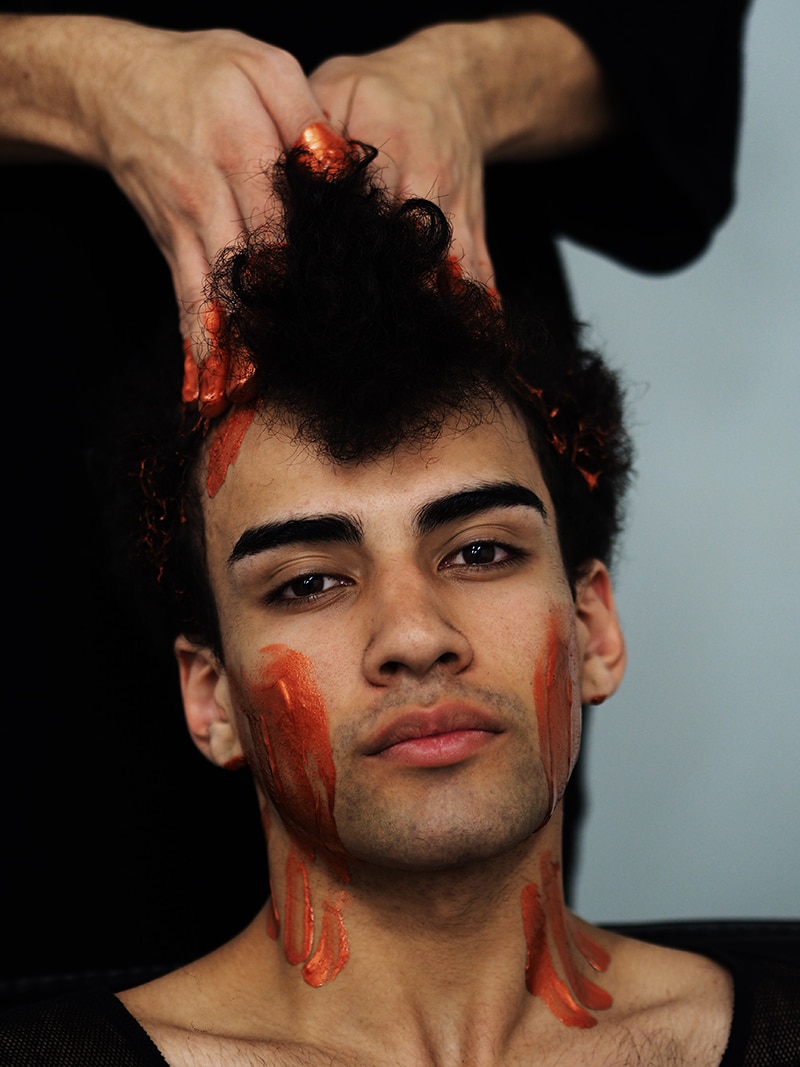
TECHNICOLOR. At first, your universe and atelier appear as dark, obscure, whereas they are a space of connection and profound welcoming. When you experiment with color, what does this mean to you?
Whilst I prefer monochrome tones in my architecture, design, and fashion, I find great inspiration from the deep, richness and purity of color that comes from nature.
Our studio space in Melbourne is located a short distance away from the vast blue ocean, lush greenery and from burnt red earth. It’s the colors and ingredients from mother earth that have been so influential in the development of our own body and hair care products. These elements and their fragrances are so profound and also dark and obscure in their own way. When I experiment with color, whether in our space, in art or on hair, it’s very much inspired by nature – either subtle and complimentary or bold, luxurious and addictive.
TITANS. If we speak of the masculine, our physique always comes forth. What does being a man mean to you?
I don’t really identify with machoism or a sense of masculine pride, nor do I have any strong attachment to what it means to be a man.
I find that many men, particularly in Australia, are hesitant and perhaps afraid of being poetic, or feminine. There is a deep-rooted cultural barrier to expressing emotion. Perhaps this is changing as society changes. The qualities that I admire most in a man or any human, are those that are perhaps more traditionally thought to be feminine. An ability to sense, to feel, to hear, to create, to dream.
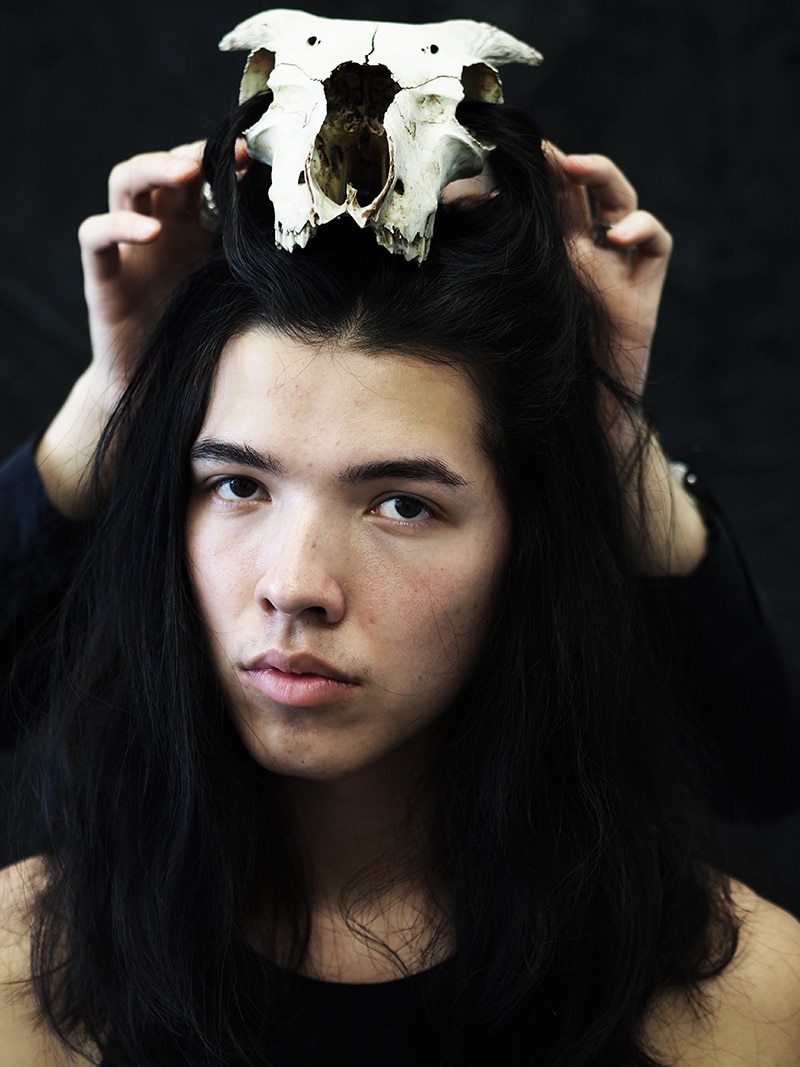
DOWN-UNDERISM. Could we speak of Melbourne, your hometown a little? As well as hair, Australia remains a little hidden in terms of design and creativity… So why should we pay more attention?
I often do feel like we are living closer to Antarctica, with it taking us nearly a day to get to Paris. Whenever I travel and come back home it reminds me how young our country is, despite our Aboriginal people having a culture which dates back 50,000 years.
What we lack in the richness of history, we make up in creativity. Melbourne is a melting pot for live music, hidden bars, coffee snobbery, street art, and fine dining experiences. I see it as a lighter, much more innocent version of Berlin.
ARTFORUM. You also curate a gallery next to the atelier. Could you tell us about artist, musicians, creators that have touched your life and why?
There are so many to name…………… A first would be Morton Feldman for his minimalist, conceptual and haunting large scale works. He wrote a string quartet piece that was 6 hours long uninterrupted. There is a purity, effortlessness and meditative quality about Feldman’s compositions, as well as unbelievable intricacy and detail. His work greatly resonates with my approach of using performance art to explore hair.
My aesthetic is strongly influenced by designers such as Yohji, Rick Owens, Maurizio Amadei and Carol Christian Poell. I admire their craftsmanship, experimentation, and creativity. And then there are the greats, whose books fill my home library – Pierre Charreu, Le Corbusier, Carlo Scarpa, Rothko, Fontana, Giacometti, Munch, Serra, Burri, Brancusi, Bacon, Lynch, Bill Viola, Bill Hensen…. The dark unusual beauty of their work, their life stories, their creations, and their unconventional ways are always inspiring.
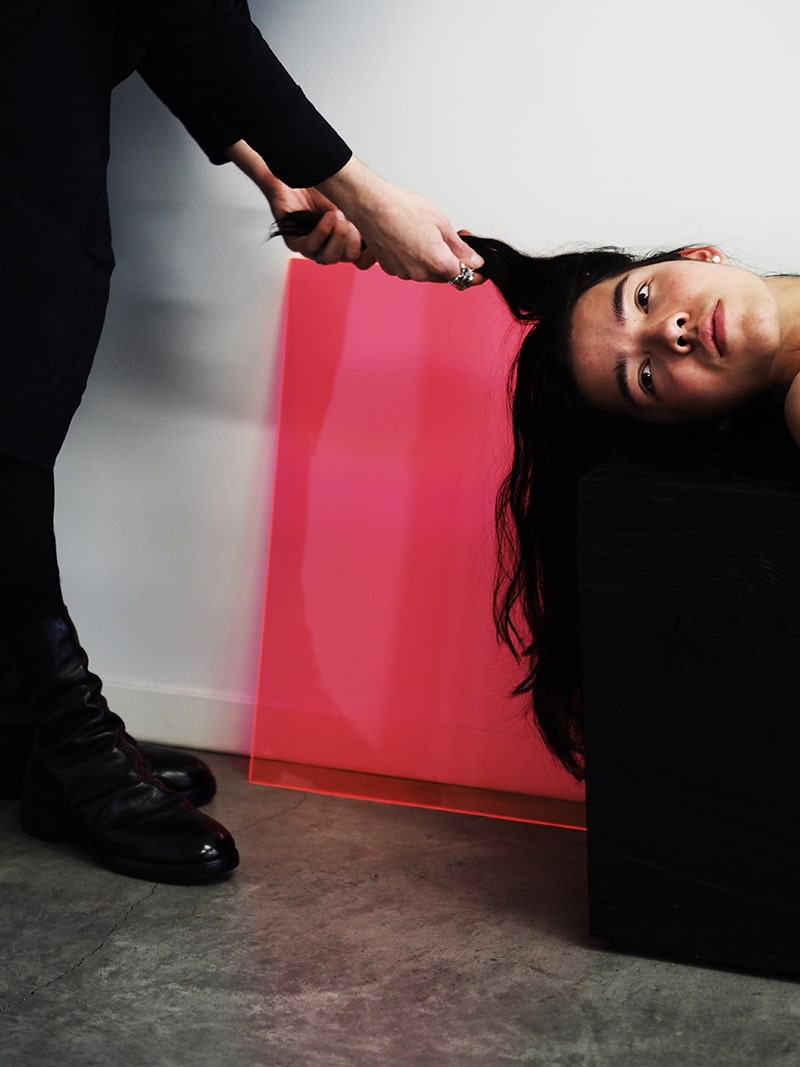
EARLY-BIRD. I love a home-cooked meal, noting your Italian roots, what would you prepare for us during this conversation, say on this rainy Tuesday?
I love simple organic produce. My grandparents owned a farm in Italy and lived off the land. This would be a dream for me.
We would dine over some fresh homemade bread and antipasto. Followed by a dish of linguini with cherry tomatoes, sardines, capers, and olive oil. For dessert, perhaps my mother’s Cassata and a shot of limoncello.
PUPPETEER. Yummy, Andy! So, going back to your previous runway comment, if we were able to hijack any SS20 Paris menswear runway show for you, which one should it be and what would the hair look like?
I’ve always been incredibly inspired by Yohji. His garments and aesthetic are very aligned with how I see and create hair. The hair would be messy and deconstructed, a mixture of lengths and textures. I would use sculpting cutting techniques, rather than styling, to create hair that is natural, organic and effortless – as an ode to his aesthetic.
FOREVER YOUNG. Our classic end to things: Andy, what does it take to remain fucking young?
A dear friend of mine is 65 years old and has a spirit and heart that is younger than anyone I know. To take a leaf from his book, to remain fucking young – means dare to dream, challenge yourself, be an individual, love deeply and surround yourself with the beautifully strange.
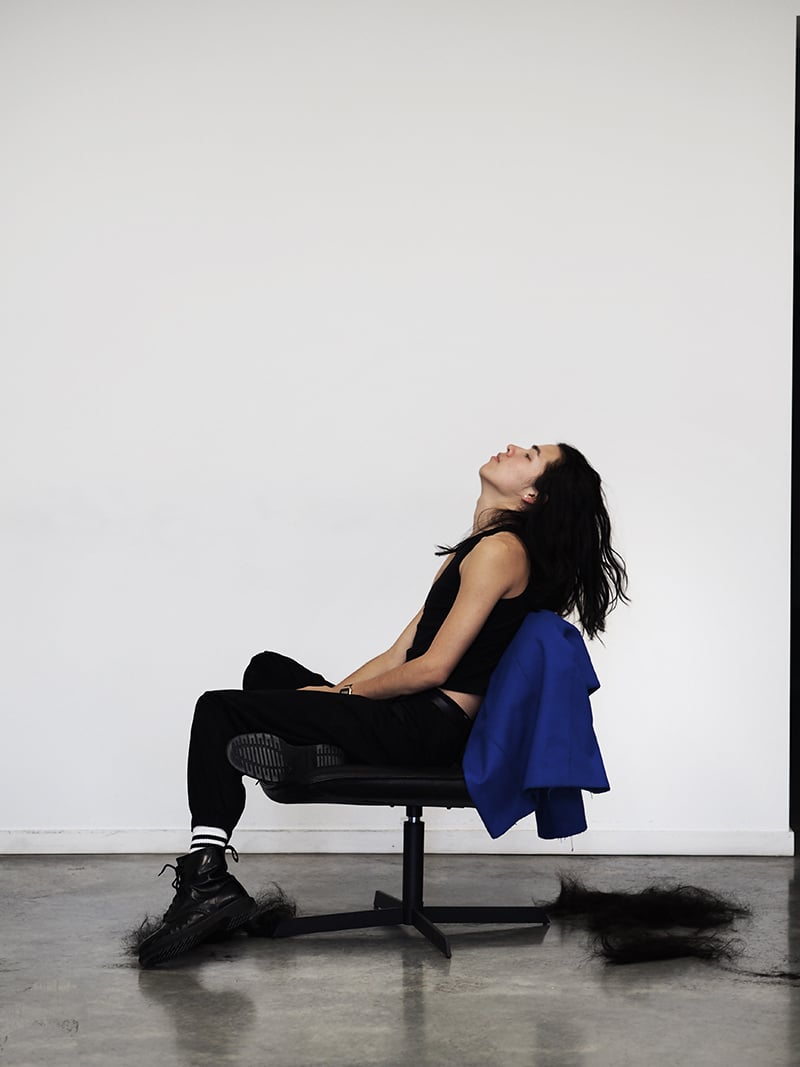
All images shot in Melbourne, Australia, exclusively for FY! by Anushka Restuccia
For more on andy: www.andyr.com.au
